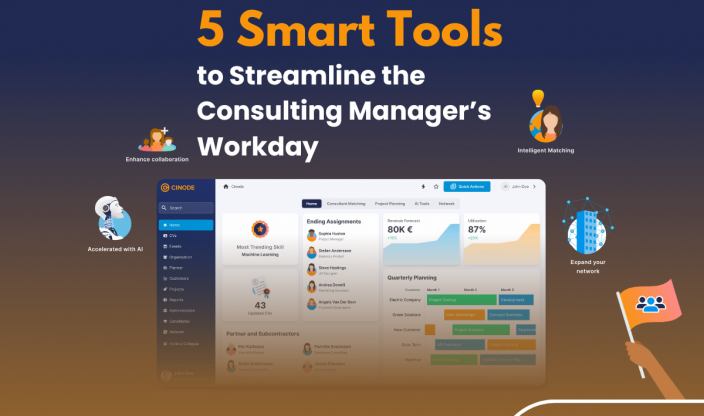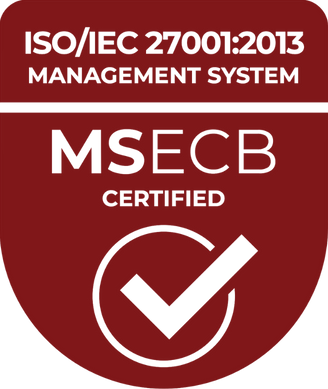The modern strategic acquirer

Where to put the resources to be better-equipped post-crisis through corporate acquisitions?
The Chalmers students, Oscar and Emil, imposes that instead of putting resources on the traditional deal-initiation process where the buyer approaches the seller, the modern acquirer turns the tables and puts more effort into creating a reputation that attracts the seller to approach the buyer. In summary, the study suggests that if you want to create growth through acquisitions, you should market your consulting firm as an attractive acquirer and create a reputation through a vision that others want to share with you.
Read the interview below to find out more.
What trends do you see in mergers and acquisitions in the consulting industry?
After five months of work with over 30 interviews and 100+ reports on mergers and acquisition strategy, we saw a trend that successful acquirers had increased their marketing efforts to position themselves as a preferred acquirer, so-called “acquirer of choice” that potential acquisition target companies are attracted to, rather than putting resources into seeking for potential targets. Therefore, we believe that the modern small business acquirer should attract potential acquisition targets by putting more effort and resources into creating the right conditions for the candidates to come to you.
Like a magnet, the company should attract candidates with other characteristics that would benefit both parties through various synergies. In order to create such a reputation that attracts, brand profiling is needed for other consulting companies and communicate that they want to acquire more companies actively. Our study shows that a strong, positive reputation not only attracts and retains talents and customers but also attracts good acquisition candidates.
The traditional way of initiating a deal is usually that the acquirer approaches the seller and asks if they are interested in selling, and then possibly places a bid. Similar to an old archer, the acquirer decides to put a lot of resources into aiming well and shooting at a few candidates. In larger deals, the process can differ from smaller and medium deals because then more often a third party is involved to manage the deal process, usually an investment bank or other external advisor.
The traditional way of initiating deals is relatively costly and often leads to excessive premiums due to bidding wars and lower negotiation advantage, which certainly benefits the sellers in the short term but not necessarily the acquirer in the long term. Instead, a more efficient way to initiate deals is to attract the acquisition candidates with a strong reputation because it leads to a better negotiating position and thus a potentially lower premium. For example, if you create a reputation for being good at taking care of companies close to bankruptcy, the likelihood that companies will turn to you if they decide they want to sell or need support, creating a better negotiating position than if you had chosen to approach them first.
To summaries, our results reveal that the M&A activity in the consulting industry has increased in recent years, which increases competition and thus increases acquisition premiums. As a consequence, the modern strategic acquirer does not solely focus on and devote resources to approaching targets but instead try to establish a strong reputation to attract potential targets.
What are the benefits of building a reputation as the acquirer of choice?
If you succeed to create a reputation as the acquirer of choice, then there are several opportunities to get exclusive takeover opportunities from sellers who approach you and thus avoid bidding wars. Also, when the seller approaches the acquirer, the chances of making the acquisition at a better timing is increased enormously because the seller is then ready to sell and willing to take the company to the next level, which has several long term benefits. It is advantageous to start with several small acquisitions to become the acquirer of choice that attracts good acquisition candidates, thus to become a serial acquirer. The study showed that buyers who continuously make acquisitions have a more natural position to become a visible and attractive buyer as they receive more media exposure. Also, they can more easily convey the targets to sell because they can use previous experience from success cases to prove that they will take good care of the company.
But don’t you miss opportunities if you only put effort on reputation without traditional searching and screening?
Yes, of course, you might miss some opportunities. But if you have limited budget and resources, you have to be strategic and know how to manage your scarce resources. In our study, we present four types of acquisition strategies that take into account your resources, vision and the candidate’s needs. There is no clear line between each strategy, and a combination of them is preferable to being dynamic and capturing as much value as possible.
Interestingly, what are these acquisition strategies?
We have designed four acquisition strategies based on two critical dimensions. The first dimension is the one we discussed earlier regarding ways to initiate a deal, either through approaching or attracting the acquisition candidates. The second dimension uses either high or low organisational autonomy to realise the acquisition synergies.
All companies are unique in their way: unique people, unique specialities and unique goals. Therefore, every acquisition strategy should also be unique and adapted to the fundamental company differences. Naturally, different companies prefer to be integrated very differently.
An essential issue for many sellers is regarding the organisational autonomy, i.e. how independent they are towards the acquirer’s organisation. A company that is not doing so well and who prefers much support needs a lower level of independence while a company with influential leaders wants to manage its operations more independently with less support. With this in mind, one can describe the four strategies as follows.
- The Diamond Scout Strategy
We call the first strategy the “Diamond Scout” because you put a large number of resources to find target companies with high potential value, just like scouts looking for diamonds. This is the most traditional strategy, and the acquirer usually has a dedicated team that scouts for a company with great potential to acquire. When you find a company with high potential value, a “diamond”, you offer an amount of money in exchange to take over the entire company with the intention to fully integrating them into your organisation, and thus giving them low autonomy because you think that you will realise more synergies by doing so. This strategy is common among acquirers with more substantial financial power, such as venture capital companies or global large giant companies. To succeed with this strategy, it can be advantageous to be proactive and build relationships long before it becomes relevant for an acquisition to be able to have a chance when they are ready. This strategy can be useful when, for example, you want to expand your customer offering with hard-to-access knowledge such as blockchain technologies.
- The Supportive Investor Strategy
The second strategy we call the “Supportive Investor” since acquisitions made with this strategy can be seen as an investment where the seller retains his self-control and is only supported by the buyer when needed. The buyer is looking for good opportunities and approaches companies that the buyer wants in their portfolio. Unlike the first strategy, it fits better when you want to buy companies that protect their family culture since the seller is allowed to maintain his self-government. In order not to frighten these investment opportunities, it is essential to approach them in a friendly and helpful way to provide support.
- The Attractive Platform Strategy
The third strategy we call the “Attractive Platform” because it is based on the buyer creating an attractive platform from which other companies can grow. This platform usually attracts growth companies that are built by talented leaders who need room to grow but are unable to grow on their own. They need the buyer’s platform to reach their full potential. These acquisition candidates do not sell the company to the highest bidder but want to approve the buyer they think has similar vision and values. To attract these acquisition candidates, strong marketing is needed that communicates that the buyer can provide the seller with the right tools to take the next step in development without being overburdened.
- The Authentic Integrator Strategy
We call the fourth strategy the “Authentic Integrator” because the strategy is to act as an authentic leader by inspiring and attracting those around them. The buyer should take good care of and allow the acquired companies to grow together with the buyer through tight integration with lower organizational autonomy. Core functions to succeed are a bold and robust culture with a clear vision. If you succeed in attracting companies that want to share the future with you, this is the strategy that, according to our results, is most likely to generate the most value in the long term.
Where can you find more info about your findings?
You are welcome to contact us on Linkedin or by mail. The entire study can be read online here. We are also interested to hear your thoughts and ideas, so do not hesitate to contact us regarding acquisition strategies in the consulting industry. We are convinced that the consulting industry will emerge stronger from the crisis if we do it together.
Which acquisition strategy do you prefer? Feel free to comment.

Guest Bloggers - Oscar Johansson and Emil Segerlund, Master students at Chalmers University of Technology
Guest Bloggers - Oscar Johansson and Emil Segerlund, Master students at Chalmers University of Technology
You may also like...
All posts
Oct 10 2025 · Consulting, Entrepreneurship
🚀 The Head of Analysis: Seven Success Factors for Consulting Firms 2025–2030

Sep 10 2025 · Consulting
“It’s About Growing Right – Not Fastest” – Netlight Scales Up with Culture and AI in Focus

Aug 21 2025 · Cinode, Consulting
🚀 A Clear View and Fast Execution – Our Journey with Cinode

Apr 30 2025 · Consulting
Understanding the psychology behind pricing

Apr 15 2025 · Consulting
How to set (the right) price?

Mar 18 2025 · Consulting
How do we charge for the value of our services?

Mar 11 2025 · Consulting
New AI Act: Checklist for Consultants and Consulting Firms

Feb 27 2025 · Consulting
Maximize Insights in Your Consulting Business with Cinode and Power BI

Jan 31 2025 · Consulting
5 Smart Tools to Streamline the Consulting Manager’s Workday

Jan 29 2025 · Consulting
New guide: How to Build Consultant Resumes That Win Clients

Nov 05 2024 · Consulting
Sweden’s most profitable consulting company reveals its secrets

Oct 30 2024 · Consulting
